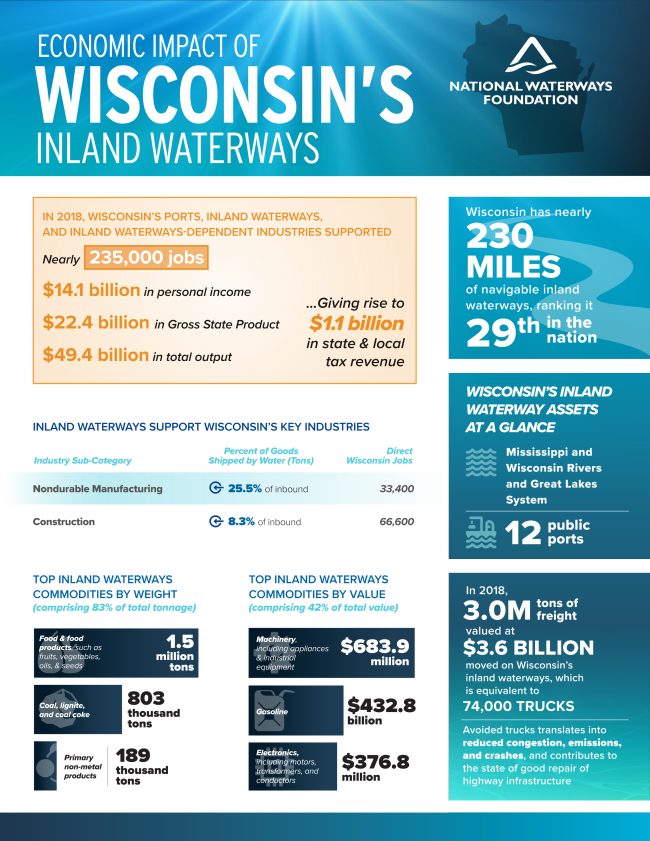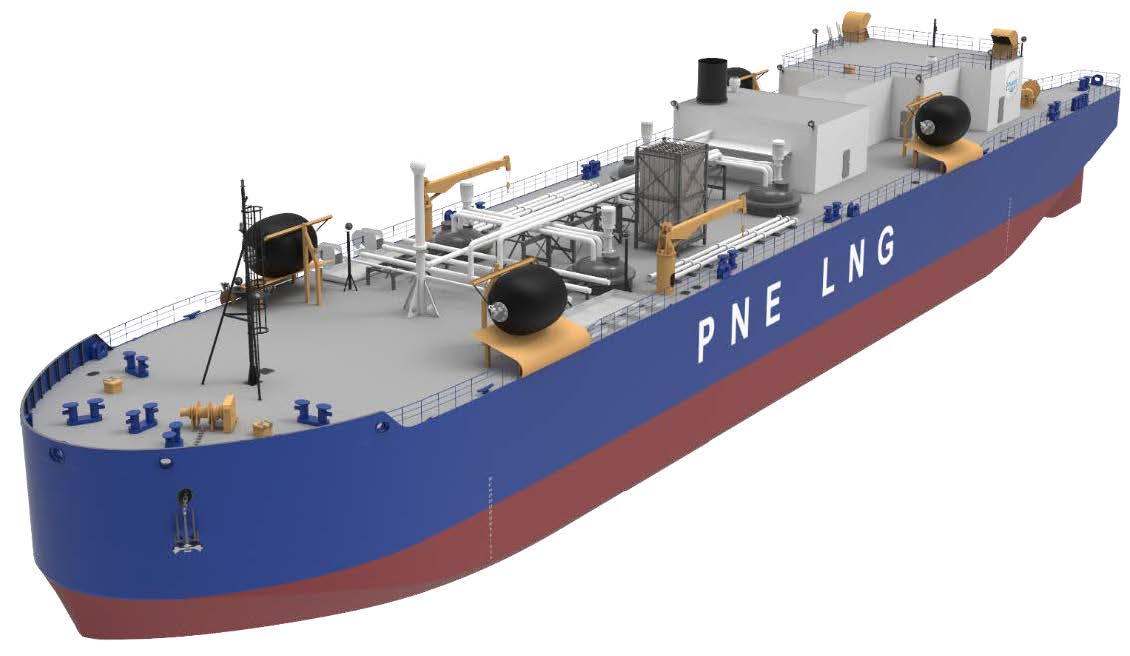| Wisconsin’s Inland Waterways An Economic Driver for the Badger State |
| Wisconsin has nearly 230 miles of navigable inland waterways, ranking it 29th in the nation. This system which includes part of the Upper Mississippi River moves Wisconsin’s economy and contributes to the state’s natural beauty. It has always played an important role in our nation’s commerce, and Wisconsin is a key part of that legacy. Generations of Wisconsinites along the Great River Road have watched the men and women of American maritime safely and efficiently transport critical commodities via barge to destinations in the U.S. and to deep-water ports for export. Wisconsin’s ports, inland waterways, and inland waterways-dependent industries support nearly 235,000 family-wage jobs in the Badger State, annually generate $14.1 billion in worker income, $1.1 billion in state and local tax revenue, $22.4 billion in gross state product, and $49.4 billion in economic output. Barge transportation is safe, environmentally friendly, economical, and fuel-efficient. One standard 15-barge tow moves the same volume of cargo as 1,050 trucks, and on one gallon of fuel it can move that freight 4x further with 10x fewer emissions. In 2018 3.o million tons of freight valued at $3.6 billion moved on Wisconsin’s inland waterway system. The top Wisconsin inland waterway commodities by weight are food products (1.5 million tons), coal (803,000 tons) and primary non-metal products (189,000 tons); by value, machinery and industrial equipment ($684 million), gasoline ($433 million), and electronics, including motors, transformers and conductors ($377 million). The ecological importance of the Upper Mississippi River in Wisconsin cannot be overstated. There are six state parks and two national wildlife refuges along the river. Wisconsin’s beautiful riparian habitat is home to fish and other wildlife. Congress officially recognized the Upper Mississippi River System as a nationally significant ecosystem and commercial navigation system through legislation. Did You Know – Water skiing was invented on the Upper Mississippi River. Ralph Wilford Samuelson invented the sport in 1922 on Lake Pepin, along the border between Wisconsin and Minnesota. |
 |
| Above Photo Grain barges move along the Upper Mississippi River (courtesy of Waterways Council, Inc.)Wisconsin Fact Sheet (courtesy of National Waterways Foundation) |
|
| Keel Laid for Polaris New Energy LNG Bunker Barge |
 |
| Fincantieri Bay Shipbuilding and Polaris New Energy hosted a private ceremonial keel laying Thursday, June 24, celebrating the start of construction of an LNG (liquefied natural gas) bunker barge. The barge will be named the Clean Canaveral and will operate as an articulated tug and barge unit that initially runs along the East Coast of the United States, providing LNG bunkering solutions to NorthStar Midstream’s customers. Upon completion it will be the largest LNG bunkering vessel in North America.After several months of pre-fabrication work of its modular sections by Fincantieri Bay Shipbuilding’s team, the 55-ton modules were set into place in Sturgeon Bay. Team members from Polaris New Energy, along with representatives of Fincantieri Bay Shipbuilding, stood to watch the first assembly of the modular components. “Our workforce is very proud to construct a new LNG barge for Polaris New Energy,” said Fincantieri Bay Shipbuilding’s Vice President and General Manager Todd Thayse. This small-scale liquefied natural gas carrier is being built by a predominantly local, highly-skilled workforce. We are excited about this partnership with Polaris New Energy and hope that it is the start of exciting things to come. “We are pleased to see the completion of this significant construction milestone,” said Polaris New Energy’s Senior Vice President of Operations Thomas Sullivan. “We are proud of our productive working relationship with Fincantieri Bay Shipbuilding, the U.S. Coast Guard, and ABS and look forward to the safe and efficient delivery of clean LNG fuel by this state-of-the-art bunker vessel.” The 5,400 m3 barge will be fitted with four 1,350 m3 IMO Type C tanks. It will utilize a cargo handling system designed and developed by Wärtsilä Gas Solutions. Dimensions of the vessel will be 340″ overall length, 66″ beam, and a depth of 32″-10″. The barge will be an ABS-classed barge and is slated for completion in late 2021. |
 |
|
| Thank you for your continued interest in the WIDMAC newsletter, designed to deliver important news, industry updates, and feature stories about the men and women of Wisconsin’s vibrant domestic maritime industry. |
|
|
|
|
|
|